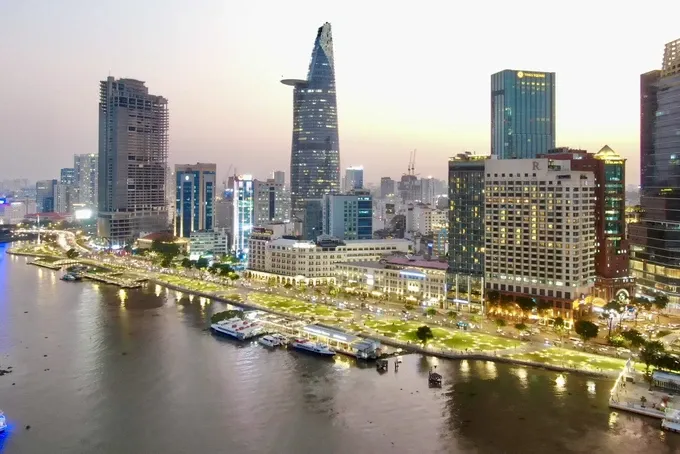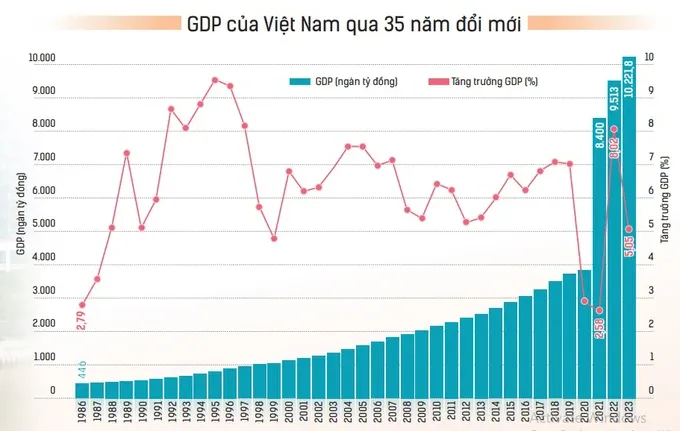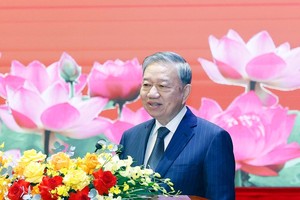
The date of April 30, 1975 marked one of the most important milestones in the history of Vietnam since it could then stand in the world as one peaceful and independent nation.
Sadly, at the end of that year, the national economy encountered various obstacles as negative effects of the war. Not identifying a suitable development model, Vietnam did make some basic mistakes in the first 10 years after independence.
Relying much on the advantages of natural resources and existing economic conditions, Vietnam at that time did not enjoy favorable conditions because of objective reasons in the world. The centrally planned economy in the Soviet economy then began to display signs of crisis, while the US and some European countries applied economic embargo against Vietnam.
The national economy at that moment just based on state-owned companies and cooperatives, whereas private enterprises could not develop, and the market was not recognized, severely damaging the driving force for national growth, especially in the aspect of agriculture and cottage industry. The peak of economic crisis in Vietnam came in the 1983-1985 period, when inflation was at 700 – 800 percent, and citizens regularly endured food shortage.
Aware of the seriousness of the situation, in December 1986, the Party decided to apply a comprehensive reform so that the country can escape its socio-economic crisis.
General Secretary of the Party Nguyen Phu Trong summarized this reform in the comment that the 6th National Congress of the Party in December 1986 presented an in-depth analysis of the current state of the country, along with the lessons learnt from other nations. Following the mottos of ‘realizing the truth, assessing the truth, and stating the truth’ as well as ‘innovating the thinking’, the National Congress was able to introduce a comprehensive reform plan for the country, which is a milestone on the path to transition to socialism in Vietnam.
Party General Secretary Trong stressed that this reform plan was able to answer the demands of the country at that time, displaying bravery and creative thinking of the Communist Party of Vietnam. This paved the way for a new period in the country’s development.
Being steadfast in its appropriate reform plan, Vietnam was able to escape the socio-economic crisis, to break the embargo, and to overcome negative obstacles of the regional as well as international financial crisis during the 1997-1998 period. Even the recent Covid-19 pandemic, considered a harsh test of national governance capabilities, could not stop Vietnam from blooming vibrantly.

The updated statistics from the International Monetary Fund (IMF) reveal that the Vietnam's GDP scale in 2023 reached US$433.3 billion, occupying the 5th position in the Southeast region and becoming the world’s 35th largest economy. The national GDP scale this year is forecast to reach $469.67 billion.
Vietnam's GDP per capita has also grown quite impressively since the years of innovation until now. In 1975, this figure was VND232 (US$80 at that time). In 2008, it increased to around $1,000, helping the country leave the list of poor and under-developed nations to enter the better list of low-middle-income developing nations. In 2023, the GDP per capita was $4,284 USD, which is one more step for Vietnam to fulfill its goal of becoming a high-middle-income country by 2030 and then high-income one in 2045.
According to General Secretary Nguyen Phu Trong, the reform process, including the development of a socialist-oriented market economy, has obtained meaningful achievements, boosting the national growth and contributing to advancing the status of Vietnam in the world stage.
He then reminded that Vietnam should not just satisfy with the accomplishments so far. In fact, the gap between Vietnam and other countries in the world is still rather large. The global GDP per capita in 2021 was $12,314 while Vietnam’s figure in that year was merely $3,717 USD, which is less than a third.
More importantly, the proportion of old people in the country is now over 13 percent. This could mean a risk of ‘being old before turning rich’ is quite high. It is necessary to apply more changes and innovations to perfect the economic institution and improve institution implementation for an even stronger and more prosperous Vietnam.
According to the Center for Economics and Business Research (CEBR) – an independent economy prediction and analysis organization from the UK, the Vietnam’s economic scale will enjoy a breakthrough in the next 14 years. In particular, maintaining an average growth rate of 6.7 percent in the 2024-2028 period and then 6.4 percent in the following 9 years means that Vietnam will have become the world’s 24th largest economy by 2033.
At that time, its economic scale will be $1,050 billion. Thanks to the advantage of large and young population, in 2038, Vietnam will have a GDP scale of $1,559 billion to surpass other economies in the ASEAN region and earn the 21st position here as well as entering the list of top-25 economies in the world.
























